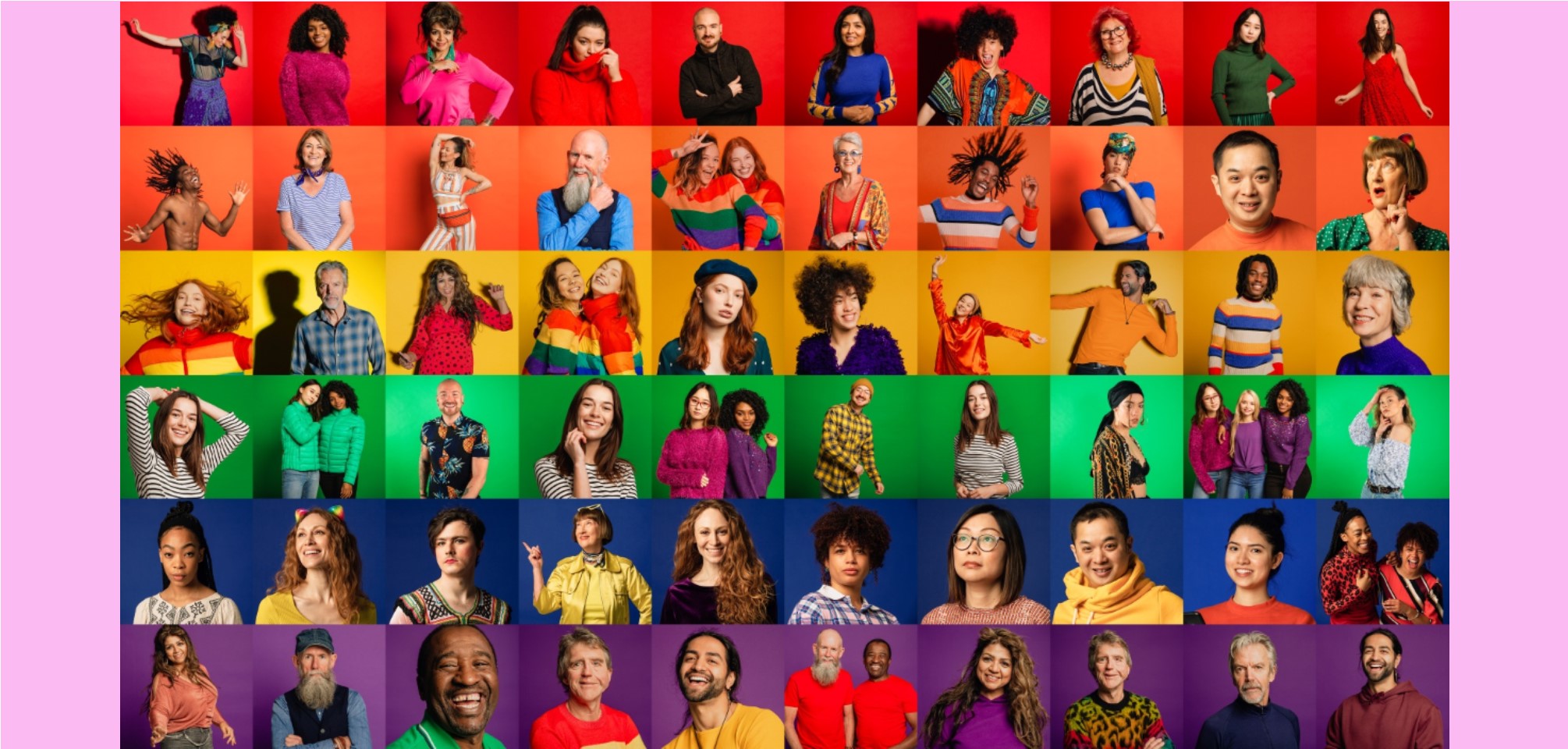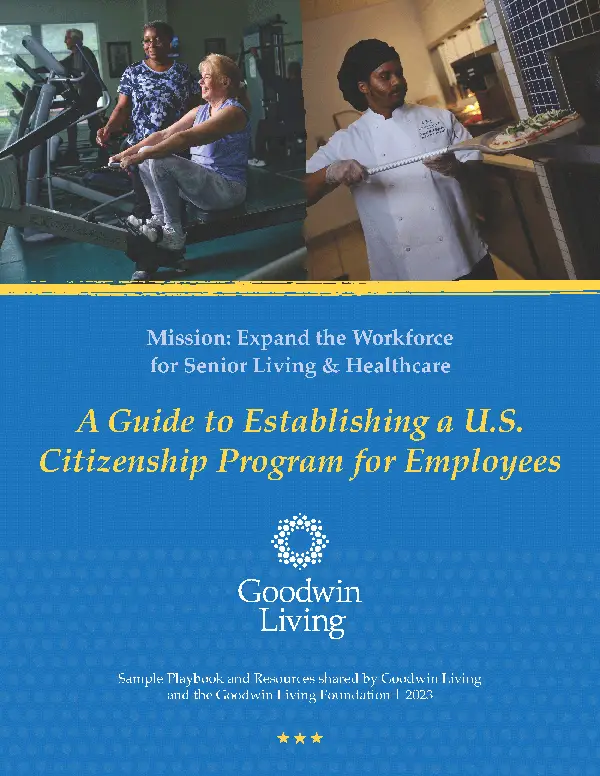
Live Vibrantly - June 29, 2020
by Kathie Miller
June is LGBT Pride Month. Every summer, people come together throughout the month to celebrate diversity, acceptance and the important contributions LGBT people make to society, both in the United States and around the globe.
LGBT stands for lesbian, gay, bisexual and transgender. You will often find more letters added to this four-letter abbreviation. Today, you will commonly see “LGBTQIA+” indicating Queer (or Questioning), Intersex, Asexual and + that is inclusive of an evolving range of gender identities and sexual orientations. The New York Times first published this guide in 2018 and updated it in 2019.
At Goodwin Living, we use “LGBT” as recommended by SAGE (Services and Advocacy for GLBT Elders), the largest organization in the U.S. dedicated to improving the lives of LGBT older adults. SAGE recently recognized Goodwin Living as a Gold Level Provider, which gives us even more reason to celebrate this month.
We celebrate Pride Month every June due to a pivotal event that happened in the summer of 1969. The Stonewall Uprising started in the early morning of June 28, when police officers raided the Stonewall Inn, a popular gay bar in New York City.
Raids were not uncommon at the time. Gay rights did not yet exist. LGBT individuals could lose their jobs and get evicted from their homes. They were viewed by many as being “mentally ill” and treated with open disdain and disrespect. The police frequently raided the Stonewall, but on this night, patrons and staff resisted and the situation quickly devolved into a riot.
What immediately followed was a series of protests that took place over the course of several days. Prior to Stonewall, gay rights activists had chosen to hold vigils and silent walks in their attempts to affect change. After this series of protests in the summer of 1968, they realized it was time to switch tactics.
Five months after the uprising, activists gathered in Philadelphia for an annual conference of LGBT organizations. They agreed to start an annual march to mark the anniversary of Stonewall, and on June 28, 1970, the Christopher Street Gay Liberation Day March was held, with help from protest organizer Brenda Howard, recognized today as the “Mother of Pride”.
While organizing the march, activists wanted to bring people in from outside of New York City to participate. They needed a theme to draw them in. In a 2015 interview with the podcast The Allusionist, Craig Schoonmaker shared, “First thought was ‘Gay Power’. I didn’t like that, so proposed gay pride.”
Schoonmaker continued, “There’s very little chance for people in the world to have power. People did not have power then; even now, we only have some. But anyone can have pride in themselves, and that would make them happier as people, and produce the movement likely to produce change.”
The official chant for that first march in 1970 was “Say it loud, gay and proud.”
New York was not the only city to host protests in 1970 to mark the anniversary of Stonewall. Thousands gathered in other U.S. cities, including Boston, Chicago, Los Angeles and San Francisco. And throughout the country, organizers did not limit themselves to just a single march on a designated day.
Since 1969, progress has been made in support of LGBT rights. With this progress, protests turned into parades and picnics and speaking events, all geared towards celebrating LGBT culture and supporting equal rights. In 1999, President Bill Clinton became the first U.S. President to recognize June as Pride Month by issuing a proclamation.
Typically, Pride Month activities occur throughout the month and culminate in a parade on the last weekend of June, both across the U.S. and around the globe. This year, as is the case with many large-scale events, celebrations were virtual.
You are probably familiar with the rainbow flag as the symbol of pride. But it was not the first symbol. As the pride movement gained momentum, the pink triangle became a symbol of the cause, but it had a dark history. In Nazi Germany, the downward facing pink triangle identified gay men in concentration camps.
The pink triangle left some activists wanting something different. One of those activists was artist Gilbert Baker. In his memoir Rainbow Warrior, Baker wrote “We all felt that we needed something that was positive, that celebrated our love.”
Having seen how the American flag was used during the 1976 Bicentennial of the United States, Baker realized the potential power a flag could have to unify people. And in 1978, he came up with the idea of using the rainbow.
Baker continued, “A Rainbow Flag was a conscious choice, natural and necessary. The rainbow came from earliest recorded history as a symbol of hope. In the Book of Genesis, it appeared as proof of a covenant between God and all living creatures. It was also found in Chinese, Egyptian and Native American history. A Rainbow Flag would be our modern alternative to the pink triangle. Now the rioters who claimed their freedom at the Stonewall Bar in 1969 would have their own symbol of liberation.”
As with all things, the rainbow flag has evolved over time. The original flag had eight colors, and each color was assigned a meaning:
At Goodwin Living, we commit ourselves to values that support our mission. Two key values are community and individuality. Here’s how we define them:
As we express these values both in our workplace and in how we care for and serve older adults, we seek guidance and training from third-party resources. Recognizing the need to raise awareness and understanding of LGBT aging issues, we sought SAGECare certification.
“Residents first brought the SAGECare certification to our attention,” shared Chief People Officer Fran Casey. “We knew we wanted to educate people, so we embarked on a training program with SAGECare that we could incorporate into both our onboarding and ongoing training programs. Our program is very intentional and ongoing—it’s part of our organizational culture.”
Just two weeks ago, we received word that we reached Gold Level certification from SAGECare. More than 60% of staff having completed basic training. Several members of senior staff, as well as a few residents, have completed more in-depth training, and we have introduced SAGECare training to our on-boarding education for new employees.
You can read more about our SAGECare certification here. And in future issues of The Good Life, we will feature more content that helps all of us better understand LGBT issues as they relate to older adults and aging.
For now, as we reach the end of Pride Month, we honor and celebrate the many contributions our LGBT residents and staff make to our organization, in ways both big and small.
———————————-
As Corporate Director of Marketing & Communications, Kathie Miller provides strategic guidance and tactical support for all areas of Goodwin Living. She writes, edits and manages The Good Life blog and newsletter. Kathie joined GHI in 2014 after nearly 15 years at NPR, where she honed her skills in brand and reputation management, content marketing and internal communications. Originally from Pennsylvania, Kathie has slowly come to realize she’s lived in Arlington for more than half her life and should call herself a Virginian. She enjoys the outdoors and brings her rescue dog, Remi, to work every day.
